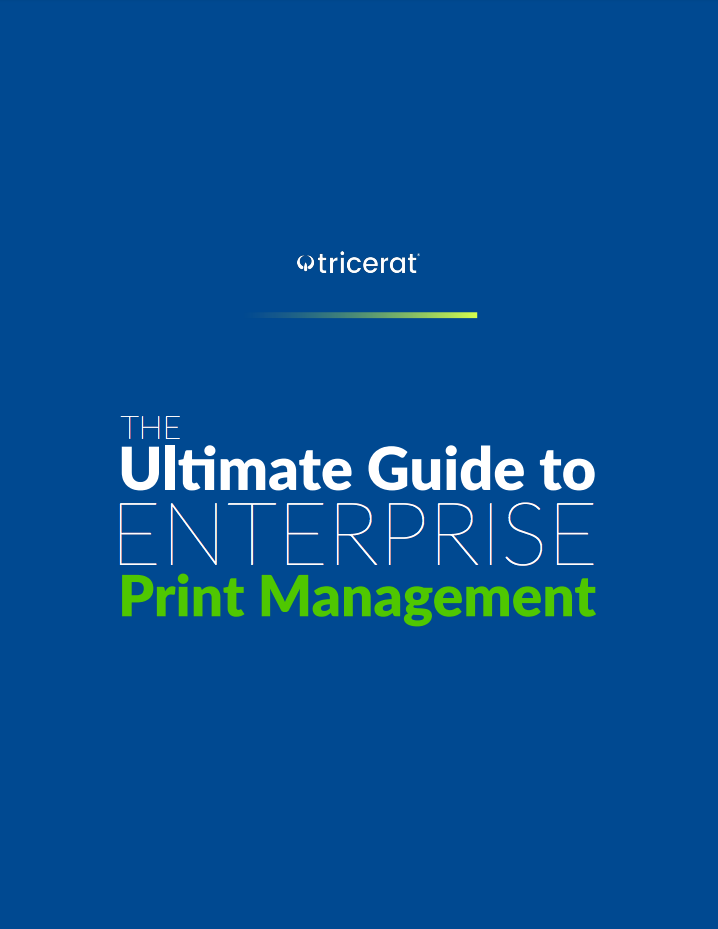In healthcare, printing is essential — but it should also be effortless. Hospitals and businesses have strict budgets with large overheads; they can't afford to waste time or money on printing issues. This is especially true in an industry where every dollar or minute wasted on printing means fewer resources for patient care.
But printing costs add up quickly. Many healthcare operations don't realize the true budgetary waste caused by printing issues, through both direct and indirect costs.

Often the most visible source of excess costs, tangible waste refers to improper use of consumables like paper, toner and ink. Inefficient systems can result in duplicate print jobs or jobs sent to the wrong location and reprinted at the correct one. This causes significant physical waste — and it also means wasted money. When the cheapest printer ink goes for more than twice as much per ounce as Dom Pérignon Champagne, and the most expensive for nine times that, the costs start to hit home.
But all of this tangible waste accounts for less than half of money lost to printing issues: 55% of the cost of ownership of printing devices are indirect costs like management, configuration, and end user productivity reduction.

Printing headaches are a thorn in the side of IT departments, draining their time from more valuable activities and forcing them to dedicate resources toward constant maintenance issues like support tickets or print configuration management.
Without effective load management, issues like print spooler crashes are frequent and bring work to a standstill — a serious problem in the high-stakes world of healthcare. Print issues result in a flurry of support calls: nearly 1 in 4 helpdesk tickets are printing related.
This wasted time represents wasted salary: your IT department could be using their hours on far more valuable tasks, rather than on menial work like print support. Because a significant percentage of those tickets are escalated to high-paying jobs like IT administrators, salary waste adds up quickly. The IT admin for US Health Benefits Company, for instance, estimated that he used 15 hours per week (98 days per year!) on printing issues caused by an inefficient system.
Printing problems can devastate your operational efficiency, and therefore your budget. Check out our ROI calculator to estimate the true price of printing in your IT department.
Hospital and healthcare business schedules are hectic. The demand on providers' time is high. When doctors and nurses are forced to contend with printing problems, it limits the time they can dedicate toward patients.
But these issues can't be ignored: printing is critical to many healthcare operations, such as access to patient information. When printing operations fail, healthcare providers and staff can't print patient charts or forms to sign. Instead, providers are stuck standing around a printer, unable to care for patients because they can't add their medical histories to their file. Printing must be quick and reliable, able to move processes forward at all times, or critical issues like patient care or new patient processing will stall.
Ideally, printing should be straightforward for providers and optimized for their needs. For instance: when doctors log into a particular client's files in Tricerat's system, they are automatically assigned to the printer nearest to that patient. This simple solution greatly reduces time wasted on basic print issues, such as having to run over to a distant printer.
Information security is vital in healthcare. All businesses have security features to ensure HIPAA compliance. But if client information is left unguarded sitting on top of a printer or print servers aren't encrypted, you're wasting both the value and the purpose of that security system.
You're also putting patient information at risk, potentially leading to fines and compliance issues. In fact, an estimated 15% of all HIPAA breaches are caused by printing errors, from delayed print jobs to improperly mapped printers.
Healthcare printing is further complicated by legal requirements or systems that manage your electronic healthcare records (EHR) and electronic medical records (EMR). Many traditional print systems can't handle the necessary compression and encryption of print jobs to enable data security, resulting in ineffective, glitchy systems.
By contrast, print management that is optimized for healthcare needs greatly reduces both time and physical waste associated with printing. As a result, effective print systems minimize your costs — direct or indirect.
To learn more about best practices in healthcare printing, read our whitepaper "Comprehensive Print Management in a Healthcare Environment."


Lorem ipsum dolor sit amet, consectetur adipiscing elit, sed do eiusmod tempor incididunt ut labore et dolore magna aliqua. Ut enim ad minim veniam, quis nostrud exercitation ullamco laboris nisi ut aliquip ex ea commodo consequat. Duis aute irure dolor in reprehenderit in voluptate velit esse cillum dolore eu fugiat nulla pariatur. Excepteur sint occaecat cupidatat non proident, sunt in culpa qui officia deserunt mollit anim id est laborum.